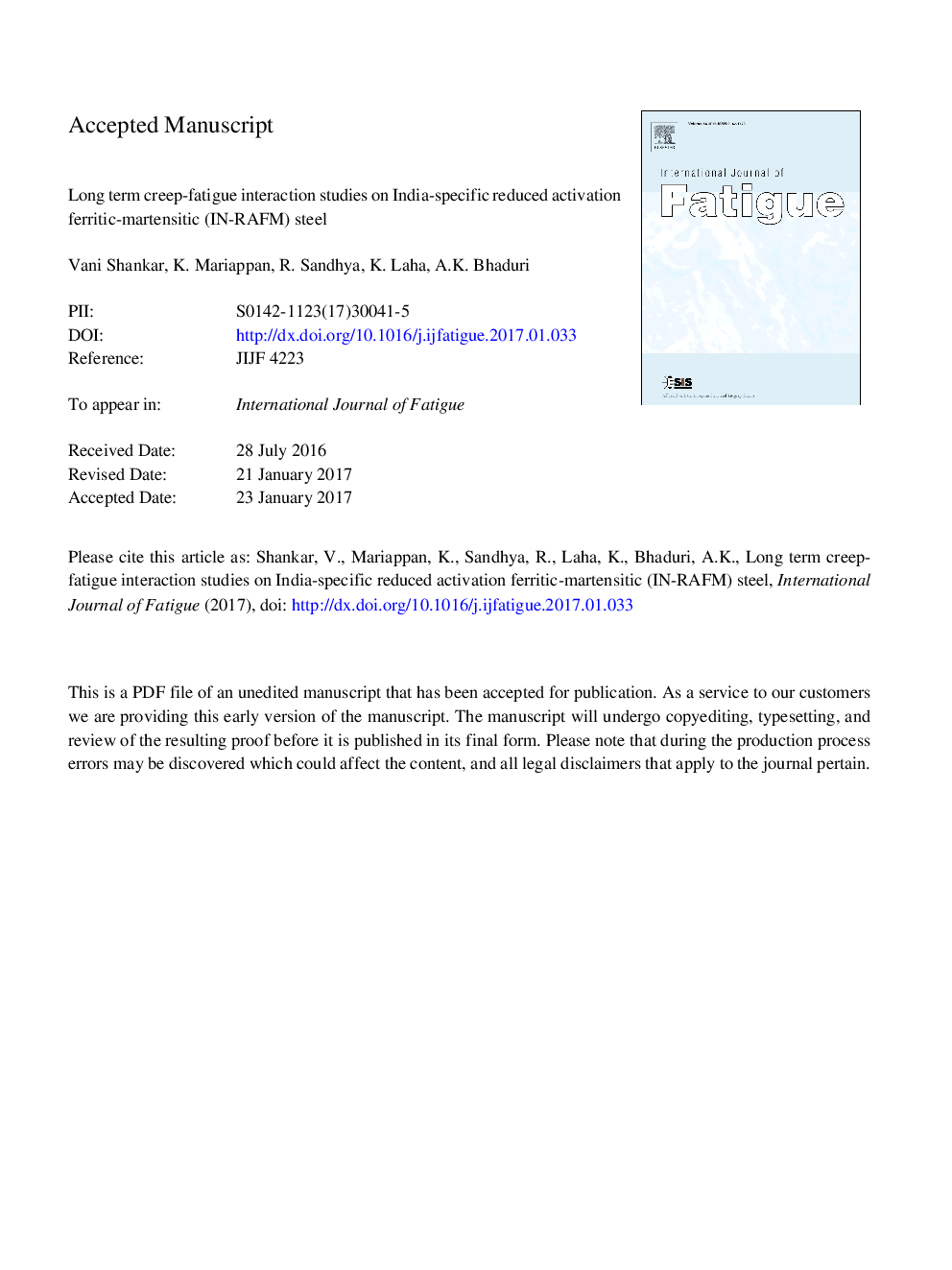| Article ID | Journal | Published Year | Pages | File Type |
|---|---|---|---|---|
| 5015238 | International Journal of Fatigue | 2017 | 22 Pages |
Abstract
Deterioration in fatigue life occurs due to introduction of hold in peak tensile or peak compressive or in both peak tensile and compressive strains in a triangular waveform. The hold period of a creep fatigue interaction (CFI) cycle denote the uninterrupted service period during which creep damage is predominant. CFI experiments comprising of long hold periods are relatively scarce but are indispensable for the understanding of long term materials behavior under CFI. Keeping this in view, CFI experiments have been performed at 823 K on a commercial heat of reduced activation ferritic-martensitic (RAFM) steel using different directions of hold (tensile hold alone, compressive hold alone and simultaneous tensile and compressive holds) for different durations and by employing two strain amplitudes, ±0.25% and ±0.6%. The extent of deterioration in fatigue life in IN-RAFM steel is found to be dependent upon the direction of application of hold. Factors such as oxidation, plastic strain accumulation, mean stresses and stress relaxation during the application of the hold played a significant role in affecting CFI life of RAFM steel. The importance of stress relaxation (SR) in assessing fatigue damage under CFI has been described. A universal relationship between CFI life and SR has been arrived at and which is found to be independent of the type of the waveform, strain amplitude or the duration of hold. Though the relationship between stress relaxation and fatigue life is non-linear, the log-log plot between SR and CFI life value depict an inverse linear relationship. The sum of least squares of the offset from the linear fit, R2 is 0.93 which is a reasonably good approximation. The log-log plot of SR versus CFI life denotes the creep-fatigue interaction line and can be used to predict CFI life for a given amount of SR occurring in the material. The proposed relationship is applicable only for long duration CFI experiments and depicts microstructural creep-fatigue interaction in true sense. Test conditions that do not prominently show the effects of creep-fatigue interaction, do not fall on the CFI interaction line.
Related Topics
Physical Sciences and Engineering
Engineering
Mechanical Engineering
Authors
Vani Shankar, K. Mariappan, R. Sandhya, K. Laha, A.K. Bhaduri,
